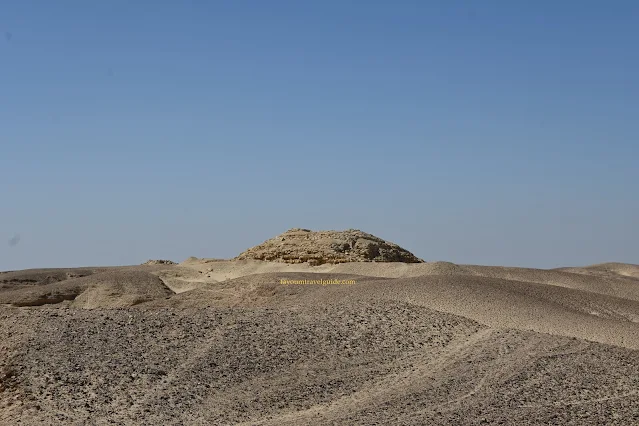Seila Pyramids in Fayoum
The Seila Pyramids of Fayoum are some of the most mysterious and fascinating ancient monuments in Egypt. Located in the western desert of Egypt .
The pyramid of Seila is one of a group of seven small step pyramids which are very similar to one another, along with the Edfu South pyramid, the pyramid of Elephantine, the pyramid of El-Kula, the pyramid of Naqada, the pyramid of Saujet el-Meitin, and the pyramid of Sinki.
The Seila Pyramid is one of only seven in Egypt with no burial chamber or mortuary complex. It commands a suitable position, sited on the highest point of the desert hills that separate the Fayoum from the Nile Valley, and in its pristine state would have been visible from large areas of both.
The pyramid is small, built in steps from locally quarried yellow limestone, and somewhat ruinous, although the structure is quite clear. Seila Pyramids in Fayoum
The Seila Pyramids are located in the Fayoum oasis, which is about 80 kilometers southwest of Cairo. The area is known for its lush vegetation and abundant wildlife, making it a popular destination for tourists. The pyramids are situated on a plateau overlooking Lake Qarun, which is the largest lake in Egypt.
The purpose of these pyramids remains unknown to this day. Some scholars believe that they were built as tombs for important people in ancient Egypt, while others think that they were used as temples or astronomical observatories. Whatever their purpose may have been, it is clear that these pyramids were built with great care and precision by skilled craftsmen who had an advanced knowledge of mathematics and engineering.
The Pyramid is different from the other pyramids as no internal chambers have been found but the central core of the pyramid is damaged and it is suggested that this may be the work of tomb robbers so it is possible that there were internal chambers when it was intact.
There are remains of a brick and stone portico which held an offering altar and statue have been found at the site implying that there was an active cult here at some point.
The remains of builders marks and inscriptions on a limestone stele and an offering table confirm that the pyramid was built by Sneferu’s name is inscribed within a cartouche whereas his name when recorded at the Bent Pyramid at Dashur is inside a serekh (palace facade). This has led to suggestions that the Bent Pyramid predates the Seila Pyramid.
The Seila Pyramids have been studied extensively by archaeologists over the years but there are still many mysteries surrounding them that remain unsolved today. For example, why did they choose this particular location? What was their purpose? And why did they build three separate structures instead of one large pyramid? These questions remain unanswered but it is clear that these mysterious monuments will continue to fascinate us for many years to come!
The Seila Pyramid
The Seila Pyramid has long been one of Egypt's forgotten landmarks. Yet now archaeologists are beginning to think it may have been more impressive than they thought. Having been reduced to little more than a glorified 7m-high mound over its 4,500-year history. It was built by prolific 4th Dynasty pharaoh Snefru, father of Khufu and famous for having commissioned pyramids at Dashur and Meidum.
Check Availability Contact Us




